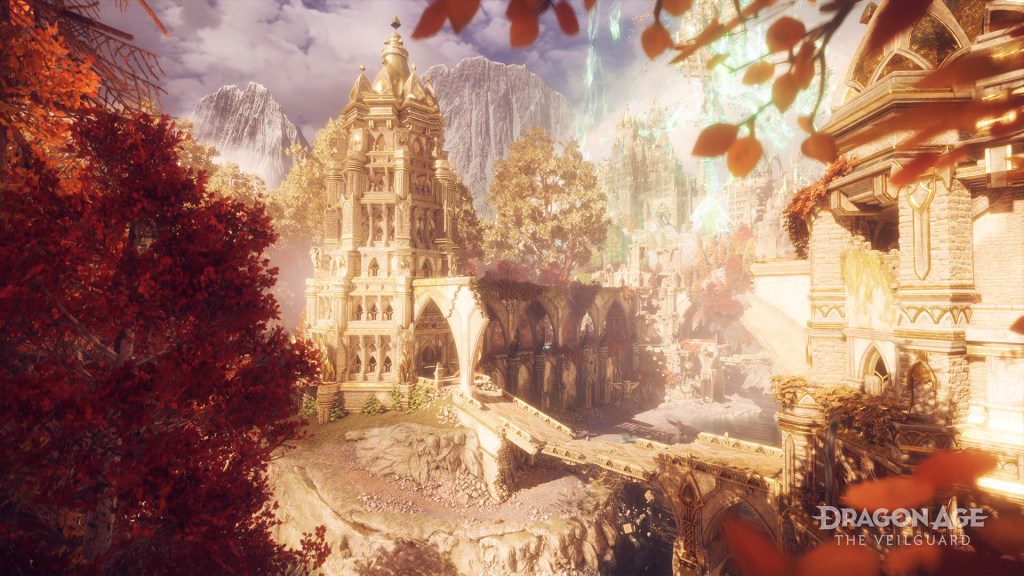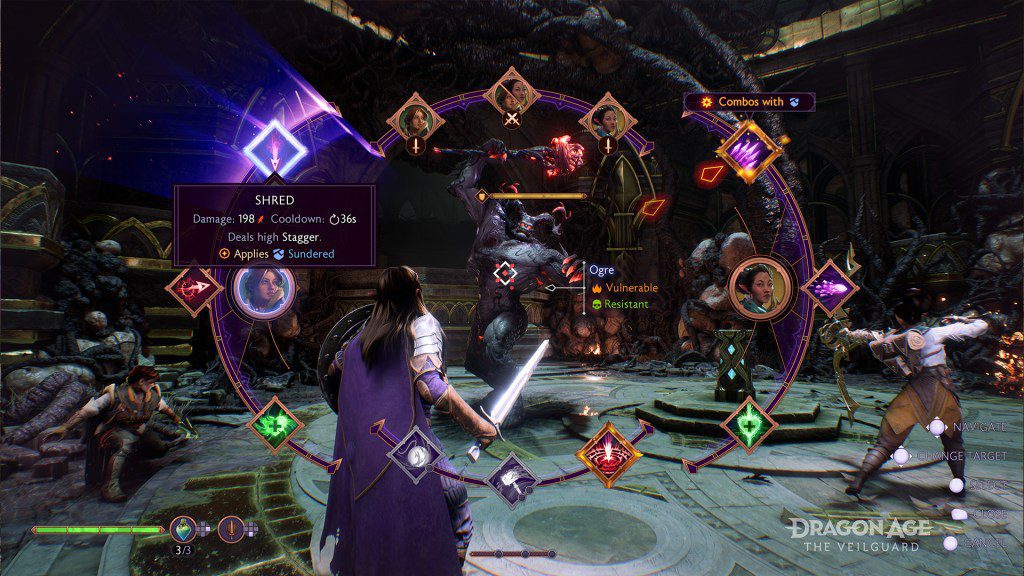‘Dragon Age: The Veilguard’ Is Bioware’s Best Game in Ages. Here’s How They Got There
It’s been a rough few years for Bioware. Originally known for making back-to-back (to back) RPG classics like Baldur’s Gate (1998), Neverwinter Nights (2002), and Star Wars: Knights of the Old Republic (2003) — as well as two sprawling, epic franchises with Mass Effect and Dragon Age — the Canadian developers once seemed unstoppable.
But then came 2017’s Mass Effect: Andromeda, the fourth entry in the beloved sci-fi series that failed to live up to the acclaim of the previous trilogy. A buggy, uninspired mess, Andromeda’s reception eventually led to all of its downloadable content plans being canceled.
In 2019, BioWare released the multiplayer adventure game, Anthem. It was a massive departure from the studio’s historically narrative-driven single-player games and it, too, was met mostly with contempt by fans. By 2021, the developer also pulled the plug on any new updates for Anthem, focusing instead on the future of the core Dragon Age and Mass Effect franchises.
That decision appears to have paid off, as Dragon Age: The Veilguard (out Oct. 31) is easily Bioware’s best game in ages. Ahead of its launch, Rolling Stone spoke with creative director John Epler to discuss what lessons the studio learned from its past risks and subsequent failures, the decision to pivot away from multiplayer, and where there is to go from here.
Back to the basics
When Dragon Age: Inquisition was released back in 2014, it broke the series’ mold by adding a multiplayer bend to previous entries’ strict single-player focus. It garnered a mixed reception, with many fans feeling like the addition felt poorly tacked on and provided little value to the core gameplay. During early development of The Veilguard, BioWare experimented with multiplayer once again, however, Epler insists that there was never a mandate from parent company Electronic Arts to implement any specific online or live-service modes; the devs were just exploring different ways to tell the story.
The Veilguard is, at its core, a very deliberately crafted solo experience.
Electronic Arts
Eventually, BioWare ditched the multiplayer aspects to focus solely on creating a single-player experience, aiming to meet the lofty expectations of the fandom. “We’re a studio built to make single-player RPGs,” Epler says. “And more importantly, I think a lot of people have come here to build single-player, story based RPGs. So, it just kind of ended up making more sense to make this game the way it is versus a multiplayer game.”
With the transition back to a core single-player emphasis, many of The Veilguard’s systems had to be reworked, including one that Bioware is most famous for: the companion system. Unlike previous Dragon Age games, The Veilguard only lets players take on two companions instead of three — more in line with how the party system works in Bioware’s other big game, Mass Effect. However, when developers were testing out multiplayer for the game, it had the classic four-player party setup where the player and three other friends could join.
But now that The Veilguard was strictly a solo affair, BioWare wanted to focus on the main protagonist, Rook, and their companions. Banter between the party was essential to get them to feel like fully-realized characters. In previous Dragon Age games, whenever the player traversed the world, non-playable party members would talk to each other about current events or their interests, fleshing out their perspectives and constantly evolving the dynamic between the team. This was usually reserved for just two characters at a time, however, with the third generally meandering off to the side.
“One of the biggest things we got slammed on at Dragon Age: Inquisition’s launch was people felt there wasn’t enough companion banter because it wasn’t faring as often,” Epler says. “So much of our companion banter is built around two characters interacting. When it came down to it, it felt like [three] was the right number when we were building the game.”

After experimenting, the devs decided that a three-person party was the right fit for Veilguard
Electronic Arts
And while it took some time to come to a final number of active party members, Epler insists that initial experimentation with multiplayer didn’t impact the decision in the end. “It was not a relic of the multiplayer at all,” he says. “In fact, one of the few things that survived was the four-person party until we tried it out a lot and realized that three made the most sense for the game.”
Lessons to be learned
While Anthem’s poor reception wasn’t the sole reason for BioWare’s decision to focus on creating single-player, narrative-driven games again, it was clearly a catalyst. One of the biggest complaints about the game from fans was the lack of traditional storytelling and characters that made the studio revered in the first place, especially coming off the back of one of the developers’ weakest links, Andromeda.
“We were alienating parts of our fan base that had been with us for a long time, and not successfully bringing in anyone else through the multiplayer side of things,” Epler says. “The reception to Anthem was very clear in that we needed to get back to those aspects that we did well, and multiplayer became an obstacle in the way of doing just that.”

2019’s Anthem strayed too far from the solo experience that fans of Bioware longed for.
Electronic Arts
Game development is by no means an easy process, and Bioware fell into the pitfalls of releasing two games back-to-back that were riddled with bugs at launch. But they’re far from the only ones that are a part of this recent trend. Games like this year’s Star Wars Outlaws also released with major technical performance issues, to the point that Ubisoft delayed the next Assassin’s Creed entry to 2025 in order to get the game’s presentation up to snuff.
The biggest lesson that BioWare learned from Mass Effect: Andromeda’s botched launch was the importance of polish. The game became the butt of jokes and a slew of memes for its hilarious visual glitches, a legacy that leaves Epler feeling torn. “I do think Andromeda was a better game than its reception suggested, but on the flip side, I don’t think the reception was unfair,” he recalls. “At the time of launch, there were technical issues and things that didn’t work.”
Avoiding these issues again was of critical importance to Epler and the rest of the team, especially as they sought to get back on players’ good graces.
Another lesson that BioWare took from critics of Andromeda, and Inquisition too, was that sometimes building a massive open world doesn’t mean much when it isn’t filled with meaningful content. At the time both games were being developed, open worlds and big explorable spaces had become an industry trend, even in games where they failed to serve the overall vision. BioWare still wanted players to have a sense of discovery in The Veilguard, but also didn’t want to settle for an open-world that the developers couldn’t realistically fill.

Bioware took to heart that an empty open world isn’t worth building.
Electronic Arts
“We had been doing Dragon Age pre-production on versions of Dragon Age 4, and we did have a version that was a lot more open-world,” Epler says. “But again, we ran into the same problem of how do you make it compelling or narratively interesting? The reception to Andromeda definitely solidified that.”
Staying focused on what’s next
With Dragon Age: The Veilguard now complete, BioWare confirms that there are currently no plans for downloadable expansions. The developers’ full attention has now shifted entirely to the next Mass Effect as their current project. While Epler won’t divulge anything about it, he does weigh in on whether BioWare would take another crack at multiplayer.
“It’s possible to tell a strong story in a multiplayer game. Final Fantasy XIV does an excellent job,” he says. “Multiplayer also introduces some complications around world states. I make a giant choice in my world, and the world changes.” For games like Dragon Age, the consequences of a player’s choice are intended to impact the narrative moving forward, but for a multiplayer game, it isn’t quite as simple. For example, one player could choose to save a certain person from their fate while another could do the opposite.
“It’s funny, because the games I play the most on my personal time are actually multiplayer games,” he says. “But when it comes to crafting these worlds and crafting the experiences, I love the focus that single-player can give you.”

Because of its design engine, Mass Effect trilogy was easier to remaster than Dragon Age would be.
Electronic Arts
Epler also comments on the possibility of some sort of Dragon Age collection, similar to the Mass Effect Legendary Collection that updated the original games for modern consoles in 2021. Having been at Bioware since the first Dragon Age game back in 2009, he would love to see a collection come together, but remastering the first three games in the series would be challenging as they were originally designed using EA’s proprietary game engines. The first two used their own custom Eclipse Engine while Inquisition used Frostbite, a platform famously used to build the Battlefield games.
The Mass Effect trilogy, on the other hand, used Unreal Engine, a more flexible and widely popular engine used in game development, which made the remastering process much easier for the Legendary Collection.
“I think I’m one of about maybe 20 people left at BioWare who’s actually used Eclipse,” Epler says. “It’s something that’s not going to be as easy Mass Effect, but we do love the original games. Never say never, I guess that’s what it comes down to.”
Shifting focus from multiplayer integration to fleshing out the solo narrative ultimately allowed BioWare to finally get The Veilguard to the finish line. “Once [the companions] become the core, all the other pieces start falling into place,” he says.
“Statistically, a lot of people just take the first two companions they meet, and that’s their party for the rest of the game. I would say for The Veilguard, try different characters, try different combinations, and get outside your comfort zone.”





